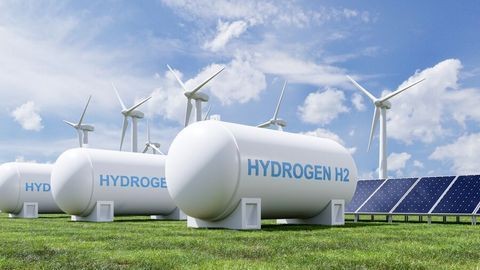The Supreme Court Grapples with EPA's Mercury Rule
Client Alert | 9 min read | 04.07.15
On Wednesday, March 25, the United States Supreme Court heard argument in Michigan v. EPA, Nos. 14-46, 14-47, 14-49. At issue is EPA's Mercury and Air Toxics Standards (MATS) rule, which establishes limits for mercury and other hazardous air pollutant (HAP) emissions from coal-fired and oil-fired power plants. The Court's review comes at a pivotal time for the electric utility sector, which faces an April 16, 2015 regulatory compliance deadline subject to certain opportunities for extension.
The case stems from a D.C. Circuit ruling upholding MATS last April. While the lower court unanimously upheld the rule on various grounds, it split 2-1 in favor of EPA on whether EPA unreasonably refused to consider costs in listing power plants as an affected source category under Section 112 of the Clean Air Act, which triggered a regulatory obligation to set emission standards under the Act's HAP program. Industry petitioners successfully sought Supreme Court review, and the Court limited its review to the question that divided the D.C. Circuit.
If the March 25 oral argument is any indication, the Court's outcome in Michigan is hard to predict. Comments from the bench would suggest four justices inclined to affirm (Justices Kagan, Sotomayor, Ginsburg, and Breyer), with four others inclined to overturn EPA's efforts (Chief Justice Roberts, and Justices Scalia, Thomas, and Alito). This would leave Justice Kennedy casting the deciding vote one way or another.
As important as the Court's ultimate ruling is whether it narrowly tackles MATS or more sweepingly speaks to EPA's authority under the Clean Air Act.
Case Background
Michigan v. EPA turns on EPA's interpretation of Section 112(n)(1)(A) of the Clean Air Act, 42 U.S.C.
§ 7412(n)(1)(A). Congress enacted the provision as part of the 1990 Clean Air Act Amendments to address HAPs from power plants. The section first requires EPA to conduct a study measuring the "hazards to public health" that are "reasonably anticipated to occur" as a result of HAP emissions from power plants. EPA must then "regulate electric utility steam generating units … if [EPA] finds such regulation is appropriate and necessary after considering the results of the study." 42 U.S.C. § 7412(n)(1)(A) (emphasis added).
Many other sources and industries besides power plants are subject or potentially subject to Section 112 emission standards. But for such sources, the Clean Air Act sets forth a strict, mass-based emissions trigger. If a source emits 10 tons per year of a single HAP or 25 tons per year of any combination of HAPs, then EPA shall add it to a list of "major sources." 42 U.S.C. § 7412(a)(1), (c)(1). EPA also has discretion to set lower thresholds based on the types of HAPs involved. Id. § 7412(a)(1). Once a source is listed, EPA must issue emission standards based on the maximum achievable control technology (MACT). Id. § 7412(d)(1)-(2). A MACT standard requires
the maximum degree of reduction in emissions of the [HAPs] subject to this section … that [EPA], taking into consideration the cost of achieving such emission reduction, and any non-air quality health and environmental impacts and energy requirements, determines is achievable for new or existing sources in the category or subcategory to which such emission standard applies.
Id. § 7212(d)(2).
Regardless of cost and other considerations, MACT generally "shall not be less stringent" for existing sources than the "average emission limitation achieved by the best performing 12 percent" of existing sources. Id. § 7212(d)(3).
In Clean Air Act Section 112(n), however, Congress established a different procedure for listing electric utilities. Instead of a reflexive, mass-based tonnage standard, Congress mandated a more qualitative process, one that starts with the utility study and ends with a finding of whether regulating power plants is "appropriate and necessary." Id. § 7212(n)(1). Notably, neither the term "appropriate" nor "necessary" is defined by the Clean Air Act.
Pursuant to CAA Section 112(n), EPA completed a study of utility HAPs in 1998, finding substantial health effects from power plant emissions. Based on that study, in 2000, EPA determined that regulating electric utilities was "appropriate and necessary."
The MATS rule, proposed in 2011 and finalized in 2012, confirmed EPA's previous "appropriate and necessary" determination. EPA found that regulating electric utilities for HAPs was "necessary" because "imposition of the other requirements of the [Clean Air Act] will not adequately address the identified hazards to public health or the environment" caused by HAP emissions from power plants. 76 Fed. Reg. 24,976, 24,992 (May 3, 2011); 77 Fed. Reg. 9304, 9363 (Feb. 16, 2012). EPA further determined that regulating was "appropriate" because HAP emissions from electric utilities pose a hazard to either public health or the environment, and because controls are available to reduce such emissions from power plants. 76 Fed. Reg. at 24,988-24,989; 77 Fed. Reg. at 9363. EPA declined to consider costs as part of the "appropriate" determination, concluding that it was "reasonable to assess whether to list [electric utilities] … without considering costs." 77 Fed. Reg. at 9327.
The Arguments
State petitioners challenged MATS on several grounds. First, they asserted that EPA's refusal to consider costs rendered the term "appropriate" superfluous. Arguing that the "necessary" finding—like the "appropriate" determination—covered whether HAP emissions by utilities were hazardous to public health, they insisted that "EPA's interpretation leaves the term ‘appropriate' with no work to do." State Petrs.' Br. at 34.
Respondents countered that the term "appropriate" means something separate and apart from the term "necessary." Whether regulation is "appropriate" goes to whether utility HAP emissions present a public health hazard, whereas the term "necessary" governs the discrete analysis of whether other regulatory programs resolve the harm. EPA Br. at 12-13. Justice Sotomayor pressed this point at oral argument, citing EPA's explanation.
Second, petitioners argued that if Congress had intended for EPA to exclude consideration of costs, it would have simply placed utilities on the same regulatory track as other industries—i.e., by deciding whether to list sources based only on the volume of their emissions. State Petrs.' Br. at 37-40. Justice Alito expressed sympathy for this position at oral argument. Justice Kagan, by contrast, signaled agreement with respondents that the purpose of the different procedure was to account for the effects of the Clean Air Act's 1990 Title IV acid rain program. That program imposed tonnage caps on sulfur dioxide (SO2) emissions from power plants. Installation of pollution control equipment on coal-fired power plants in order to comply with this cap produced the "co-benefit" of reductions in HAP emissions. Congress, she and respondents argued, wanted to give EPA some discretion to determine whether the acid rain program could obviate the need for regulation under Section 112. See EPA Br. at 7-8.
Third, petitioners argued that the costs (approximately $9.6 billion annually) of MACT standards so outweigh the benefits of lower mercury emissions ($4-6 million annually) that it was manifestly unreasonable to regulate for HAP emissions as EPA had done. State Petrs.' Br. at 46-47. Respondents countered that the $4-6 million benefits figure ignored the $37 to $90 billion in co-benefits—i.e., the benefits resulting from control technologies in cutting emissions of other "criteria" pollutants, like SO2 and fine particulate matter. EPA argued it was reasonable to consider all benefits of imposing MACT standards, not just those resulting from reductions in the specific HAPs regulated. EPA Br. at 54-57.
The Chief Justice took issue with EPA's position on co-benefits. He declared the benefits calculation an "end run" around the separate Clean Air Act program specifically designed to regulate criteria pollutants, and argued EPA was "using … the HAP regulation to get at the criteria pollutants that you otherwise would have to go through a much more difficult process to regulate."
Notably, the justices spent considerable time probing an issue not briefed: whether EPA may account for costs of emission standards through sub-categorization of the source categories that are regulated. This question arose out of a concern that if EPA does not consider costs at the listing stage, it is not compelled to do so at the MACT standard-setting stage. That is, under Clean Air Act Section 112(d), once a category or subcategory is listed, EPA must set emission standards that are at least as stringent as the standards achieved by the top 12 percent of performers in a given source category—regardless of cost. 42 U.S.C. § 7412(d)(3)(A). At least five justices, Justice Kennedy included, expressed significant unease with this scenario.
Justice Breyer theorized a way out of the apparent conundrum, drawing upon EPA's authority to split source categories into subcategories. Under Section 112—as well as under other provisions of the Clean Air Act—EPA may create subcategories of sources based on class, type, and size when setting emission standards. 42 U.S.C. § 7412(d)(1); see 77 Fed. Reg. at 9367, 9378. EPA then treats each subcategory as a discrete group, and sets separate emission standards for each. See id. EPA did just that under the MATS rule, setting forth subcategories of power plants based on the type of fuel used and whether or not Integrated Gasification Combined Cycle technology was applied. 77 Fed. Reg. at 9367, 9378.
Justice Breyer suggested that sub-categorization may also serve to account for costs: "[I]f you [] have the most expensive set of generators in the world, you would ask EPA to create a separate category for them in which case the top 12 percent would no longer be in your category …." Thus, less efficient plants that cannot reasonably meet the MACT floor standard—e.g., if it is too costly to do so—would be spun out into their own subcategory.
The Chief Justice and Justice Scalia expressed significant concern that this point was not briefed, and that it may also be absent from the administrative record.
Implications
The fact that the Court agreed to hear the case at all is telling since the issue reviewed is primarily one of statutory interpretation. Under the familiar Chevron agency deference standard, a court generally defers to an agency's reasonable interpretation of an ambiguous statutory provision that it is charged with administering. See Chevron, U.S.A., Inc. v. Natural Res. Def. Council, Inc., 467 U.S. 837, 842-44 (1984). Once a court decides that Congress' intent is not clear, then more often than not it defers to the agency's interpretation. Here, the D.C. Circuit held that Congress did not clearly intend for EPA to consider costs in determining whether it was "appropriate and necessary" to regulate power plants, and so it refused to read into that provision a cost requirement. Relying on another Clean Air Act case, Whitman v. American Trucking Ass'ns, Inc., the D.C. Circuit emphasized the Supreme Court's longstanding "refus[al] to find implicit in ambiguous sections of the [Clean Air Act] an authorization to consider costs that has elsewhere, and so often, been expressly granted" under the Act. White Stallion Energy Ctr. v. EPA, 748 F.3d 1222, 1238 (D.C. Cir. 2014) (quoting Whitman v. American Trucking Ass'ns, Inc., 531 U.S. 457, 467 (2001)).
Notably, Justice Scalia wrote the majority opinion in Whitman, where he refused to read costs into the Clean Air Act. Yet his comments from the bench in Michigan were addressed more to a concern that MATS was "outrageously expensive," and thus could fall as an "arbitrary and capricious" exercise of agency authority under the Administrative Procedure Act. He went so far as to quarrel "with the premise that when … Congress says nothing about cost, the agency is entitled to disregard cost." By taking on MATS, Justice Scalia and at least three other justices who voted to grant review may be looking to clarify Whitman to say that in those circumstances where Congress has not foreclosed consideration of costs, the courts will closely examine EPA's decision to not consider costs.
While the Court granted review on a narrow question, it could rule in any number of ways. If it does not affirm the D.C. Circuit's decision upholding MATS, it could vacate or remand the rule with either a narrow opinion limited to MATS, or a sweeping one that affects future rulemakings. For example, the Court might agree with petitioners that in the limited context of Section 112(n)(1)(A), Congress clearly intended for EPA to consider something beyond health impacts reflected in the utility study, because that particular provision requires EPA to take the additional step of determining whether regulation is, nevertheless, "appropriate and necessary." Or, the Court could more broadly find it unreasonable as a matter of general administrative practice to not consider costs, and in doing so curb agency discretion in interpreting ambiguous statutory provisions. A decision in the latter mold could spell future trouble for EPA's most ambitious program yet under the Clean Air Act—its current proposal to regulate greenhouse gas emissions from the Nation's fleet of existing fossil fuel-fired power plants.
Contacts
Insights
Client Alert | 2 min read | 12.19.25
GAO Cautions Agencies—Over-Redact at Your Own Peril
Bid protest practitioners in recent years have witnessed agencies’ increasing efforts to limit the production of documents and information in response to Government Accountability Office (GAO) bid protests—often will little pushback from GAO. This practice has underscored the notable difference in the scope of bid protest records before GAO versus the Court of Federal Claims. However, in Tiger Natural Gas, Inc., B-423744, Dec. 10, 2025, 2025 CPD ¶ __, GAO made clear that there are limits to the scope of redactions, and GAO will sustain a protest where there is insufficient evidence that the agency’s actions were reasonable.
Client Alert | 7 min read | 12.19.25
In Bid to Ban “Woke AI,” White House Imposes Transparency Requirements on Contractors
Client Alert | 5 min read | 12.19.25
Navigating California’s Evolving Microplastics Landscape in 2026
Client Alert | 19 min read | 12.18.25
2025 GAO Bid Protest Annual Report: Where Have All the Protests Gone?




